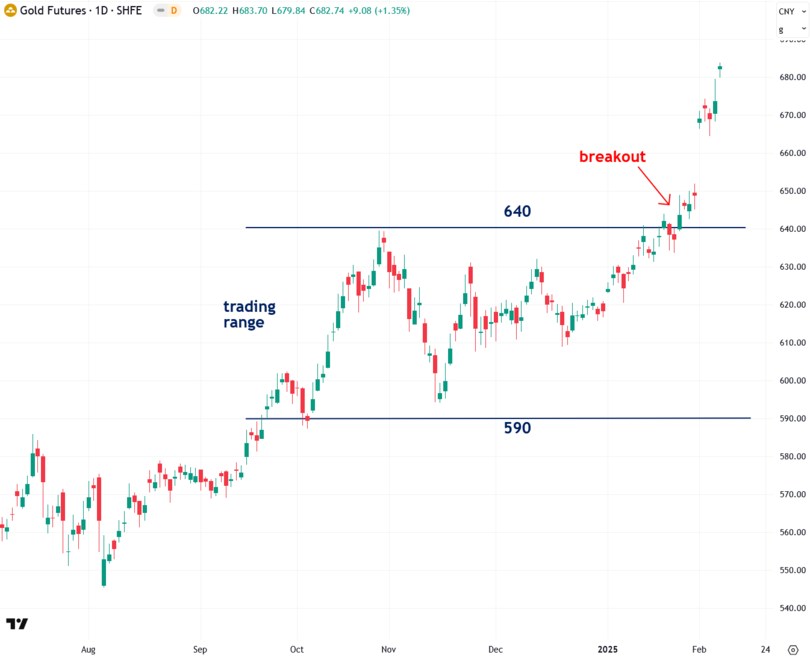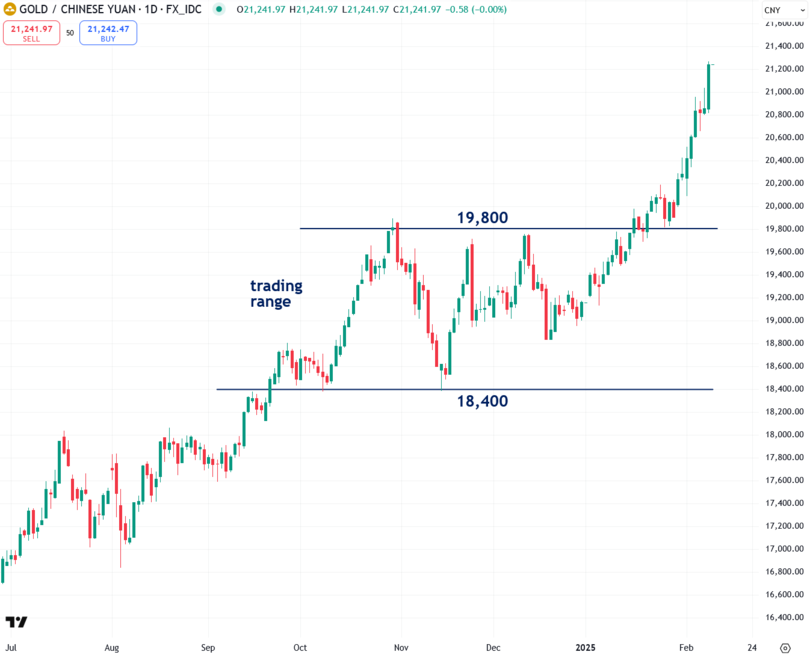(Jesse Colombo, Money Metals News Service) China’s futures traders have been the driving force behind gold’s extraordinary $400 surge in March and April 2024. However, these traders have been relatively quiet since then.
My theory is that as gold heats up again, they will return, triggering a parabolic rally to $3,000 and beyond.
Since then, a major development has emerged: China is now allowing insurance companies to invest in gold for the first time. This policy shift could unlock billions of dollars in new investment, providing yet another catalyst for gold’s record-breaking rally.
According to a Bloomberg article, ten major insurance firms—including PICC Property & Casualty Co. and China Life Insurance Co., two of China’s largest—have been granted approval to invest up to 1% of their assets in gold bullion under a newly implemented program that took effect last Friday.
This policy shift could inject as much as 200 billion yuan ($27.4 billion) into the gold market.
China’s decision to allow insurers to invest in gold may signal that authorities acknowledge the limited investment options in Asia’s largest economy. Amid a deepening property downturn and economic slowdown, this move underscores a shift toward alternative assets to enhance stability and diversification in the financial sector.
As Guotai Junan Securities stated in a published note, “Insurance companies lack options for mid- and long-term assets with stable yields.”
Notably, this policy adjustment marks gold as the first commodity that Chinese insurers have been explicitly permitted to invest in. Historically, China has restricted insurance funds from holding assets without “stable cash returns” while also capping their exposure to bonds and stocks. This latest move could open the door for broader institutional participation in the gold market, adding further momentum to its rally.
China’s gold benchmark—the Shanghai Futures Exchange gold futures—was already surging even before the new policy allowing insurers to invest in gold. This latest development is likely to add even more fuel to the rally.
The futures contract had been trading within a 590–640 yuan per gram range but recently broke out, signaling what I believe could be the start of an even more explosive move driven in large part by Chinese futures traders, the same group that ignited gold’s $400 rally in spring 2024, while Western investors remained largely indifferent.

The trading range and recent breakout are also evident in the international spot gold price denominated in Chinese yuan, providing further confirmation of the bullish trend:

While Chinese futures traders have a history of aggressively going long on gold, China’s physical gold buyers—particularly jewelry buyers—have been more cautious in recent months due to soaring prices.
As a major gold importer, Chinese buyers often pay a premium to secure bullion. However, for most of the past six months, the so-called Shanghai premium flipped to a discount, signaling weak demand for physical gold as prices surged. This unusual shift suggests that high prices have deterred traditional buyers, even as speculative traders continue to drive gold higher.
“There’s an affordability issue,” said Philip Klapwijk, managing director of Hong Kong-based consultant Precious Metals Insights Ltd. “And then there’s just the general economic malaise, and the fact that consumers are not in a position to open their purses or wallets in the way they used to.”
Chinese mom-and-pop investors in physical gold are currently experiencing sticker shock after gold’s 42% surge in yuan terms over the past year.
However, my theory is that they will soon have to come to terms with the reality that this rally isn’t a temporary anomaly—it’s here to stay, driven by soaring global debt and the rapid devaluation of fiat currencies worldwide.
Once they realize that gold isn’t going to drop, I expect a wave of FOMO (fear of missing out) to take hold, pushing them to pile into physical gold more aggressively than ever. This buying frenzy will send gold prices to astronomical heights.
And it won’t just be China—I see this pattern playing out worldwide as more investors wake up to the new financial reality. That’s why now is the time to secure your physical precious metals—before the tidal wave of demand sends prices even higher.
Jesse Colombo is a financial analyst and investor writing on macro-economics and precious metals markets. Recognized by The Times of London, he has built a reputation for warning about economic bubbles and future financial crises. An advocate for free markets and sound money, Colombo was also named one of LinkedIn’s Top Voices in Economy & Finance. His Substack can be accessed here.

